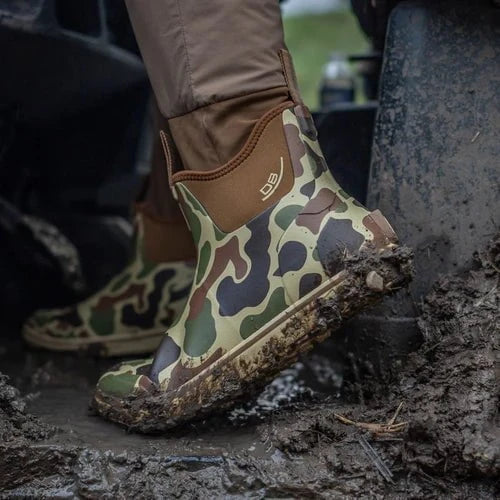Safe Shotgun Handling
Safe shotgun handling is essential for anyone participating in hunting or shooting sports. By following established safety practices, you can prevent accidents, protect yourself and others, and enjoy your activities with confidence. Whether you are an experienced shooter or a beginner, prioritizing safety ensures a positive and responsible experience. Emphasizing firearms safety involves following specific rules and guidelines, such as unloading firearms when not in use, familiarizing yourself with different firearm types, and ensuring the safety of those around you, especially children and novices.
Fundamental Rules of Shotgun Safety
Treat Every Shotgun as if it is Loaded
Always assume the shotgun is loaded. Even if you believe it is empty, handle it with the same caution and responsibility as if it were a loaded firearm.
Keep the Muzzle Pointed in a Safe Direction
Never point the muzzle at anything you don’t intend to shoot. This applies at all times, including during transport, handling, and storage.
Keep Your Finger Off the Trigger Until Ready to Shoot
Place your finger along the side of the shotgun, outside the trigger guard, until your sights are on the target and you are prepared to fire.
Emphasizing gun safety is crucial; understanding different types of firearms and enrolling in safety courses are essential steps for responsible gun ownership.
Know Your Target and What’s Beyond It
Always identify your target clearly and ensure the area behind it is safe. Be aware of other hunters, animals, or objects that could be impacted.
Safe Handling During Hunting
Loading and Unloading
-
Only load your shotgun when you are in the hunting area and ready to shoot, as handling a loaded gun outside of this context can be extremely risky.
-
Unload the shotgun immediately when leaving the hunting area or climbing over obstacles.
-
Keep the action open when not actively hunting to show that the firearm is unloaded.
Carrying Your Shotgun
-
Use a safe carrying method, such as a break-action carry or sling.
-
Keep the shotgun pointed in a direction where it cannot harm others, even if it accidentally discharges.
-
Avoid resting your finger on the trigger while walking or carrying the firearm.
Hunting with Others
-
Establish zones of fire to prevent shooting in the direction of other hunters.
-
Communicate clearly with hunting partners, especially when game appears.
-
Wear high-visibility clothing to ensure you remain visible to others.
-
Enrolling in hunter safety courses is essential to understand and adhere to safety practices, ensuring a safe environment for everyone involved.
Safe Handling in Shooting Sports
On the Shooting Range
-
Keep your shotgun unloaded and the action open until you are on the firing line.
-
Follow all range rules and listen to the range officer’s instructions.
-
Never point your shotgun at anyone, even in jest or while moving it to the firing line.
-
Emphasize shooting safety by always wearing protective gear, such as eye and ear protection, and familiarizing yourself with the specific mechanical characteristics and handling rules of the firearm.
During Shooting Activities
-
Ensure the muzzle is always pointed downrange.
-
Double-check that your shotgun is empty before leaving the shooting area.
-
Be mindful of others on the range, maintaining a safe distance and clear communication.
Emphasizing gun safety and shooting range etiquette is crucial, especially when participating in various shooting disciplines, including sporting clays, at facilities like trap and 5-stand ranges.
Transporting Your Shotgun Safely
Unload the shotgun before placing it in a case for transport.
Use a secure, hard-sided case for travel to prevent accidental damage or discharge.
Store ammunition separately to minimize risks.
Additionally, always wear eye protection while shooting to guard against various hazards such as debris and potential firearm malfunctions.
Maintenance and Safety
Regular Cleaning
-
Clean your shotgun after every use to ensure proper functioning and to remove residue.
-
Inspect moving parts and mechanisms for wear or damage that could lead to malfunctions.
Storage
-
Store your shotgun unloaded and in a locked safe or cabinet.
-
Keep ammunition in a separate, secure location to prevent unauthorized access.
Teaching and Reinforcing Safety
-
Teach new hunters or shooters the four rules of firearm safety before handling a shotgun.
-
Model safe handling practices at all times to reinforce good habits.
-
Encourage questions and provide clear explanations about safety procedures.
Conclusion
Handling a shotgun safely is essential for both hunting and shooting sports. By adhering to fundamental safety practices and maintaining awareness of your surroundings, you can prevent accidents and enjoy your activities responsibly. Whether you are on the range or in the field, prioritizing safety benefits everyone involved.
FAQs
What is the most important rule of shotgun safety?
Always treat the shotgun as if it is loaded, ensuring cautious and responsible handling at all times.
How can I safely carry a shotgun while hunting?
Use a safe carry method, such as a break-action carry, with the muzzle pointed away from others and the trigger finger off the trigger.
Should I unload my shotgun while crossing obstacles?
Yes, always unload your shotgun when crossing fences, streams, or other obstacles to prevent accidental discharge.
What eye and ear protection should I wear while shooting?
Always wear eye and ear protection to safeguard against debris and loud noises. High-visibility clothing is also essential when hunting with others.
How often should I clean my shotgun?
Clean your shotgun after every use to remove fouling and ensure reliable operation. Regular maintenance extends the firearm's lifespan and enhances safety.
